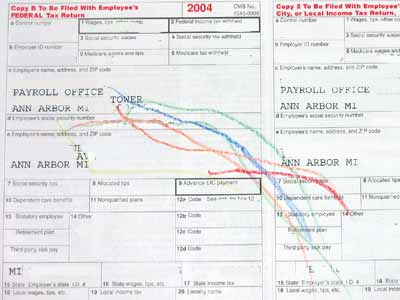A few years ago I was at a great birth. A first-time mother’s water broke around 5 a.m. and she had the baby around 11 a.m. She labored at home until around 10:00 when she said “I think we should go now.” Her contractions were every 3-4 minutes, lasting about a minute. Definitely active labor. Only in the car ride did her quiet, low-pitch humming begin to escalate. We began to lock eyes and breathe together through each contraction. She was 9.5 centimeters in triage.
They no sooner got her in to a room than she started pushing. I was set for the 2-3 hour run, but instead 20 minutes later her slick little boy entered the world to everyone’s delight.
At that moment a nurse poked her head in the door and said “there are some grandparents out here that would like to come in.” It was the new mom’s parents. She asked the nurse to tell them that she’d send her husband for them when she was ready for them. Then she examined her son, shared hugs and kissed with her husband, put the baby to breast and began to absorb what just happened.
Soon after she delivered her placenta a different nurse came in the room: “Your parents are out here and they’re pretty eager to see you.” My client smiled and said, “Tell them another 20 minutes or so.” The nurse waited at the door and said, “Maybe one of you could come talk to them? They’re pretty anxious.”
I walked out to the hallway. A short, stocky, gray-haired man approached me as soon as I stepped out the door. “What the hell is going on in there?” he demanded. “They keep telling us we can’t go in. We don’t even know if the baby’s alright. How is my daughter? I want to see her!”
Whoa! Pinned against the wall, I took a breath and calmly explained that everyone was doing wonderfully. The baby was healthy, the mother was radiant. Things could not have gone any better. “But,” I said, “Your daughter is still undressed and is not ready to have guests yet. She wants to see you all just as soon as she has had some time to get herself together.”
They returned to the waiting room. When the new father went to deliver the news in person, he returned with the clan in tow. He offered a weak smile to his wife and said, “I couldn’t hold them back any longer.”
Long story for a short point: it would be useful to provide family with education about childbirth and new parents. Some new grandparents handle their new status gracefully. Others, however, become wrapped in a self-centeredness that rivals that of adolescence. I do not mean this in a vicious way. In fact, I am sympathetic.
New grandparents are befuddled by the hospital practices and birth timelines (“if she’s been pushing for 2 hours something must be wrong!”). They are overwhelmed with the anticipation of access to a baby, and better yet, kin, that they have not had since their own children were born. Yet in their excitement to meet their new grandchild and/or verify the well-being of their daughter/in-law many new grandparentsforget that these are the first moments of bonding for the motherbaby unit and the new nuclear family. And days, weeks later, they also forget that new parents need help with the house, not (usually) help cuddling the baby.
After the birth I described above I went home and began drafting a pamphlet for expectant grandparents, aunts and uncles. Like so many things, it sits as an unfinished draft on my computer’s hard drive.
But I came across this story about a
class for grandparents-to-be and it sounded like a great idea. I am wondering whether there would be any audience for that here. I would love to teach a similar course, though with a slightly different focus: how to be helpful to your children when they become new parents.
Better still would be to have a grandparent teach or co-teach the class. They would be someone the audience could relate to and trust better than me, who is the same age as their birthing children.
Course outlines anyone?









